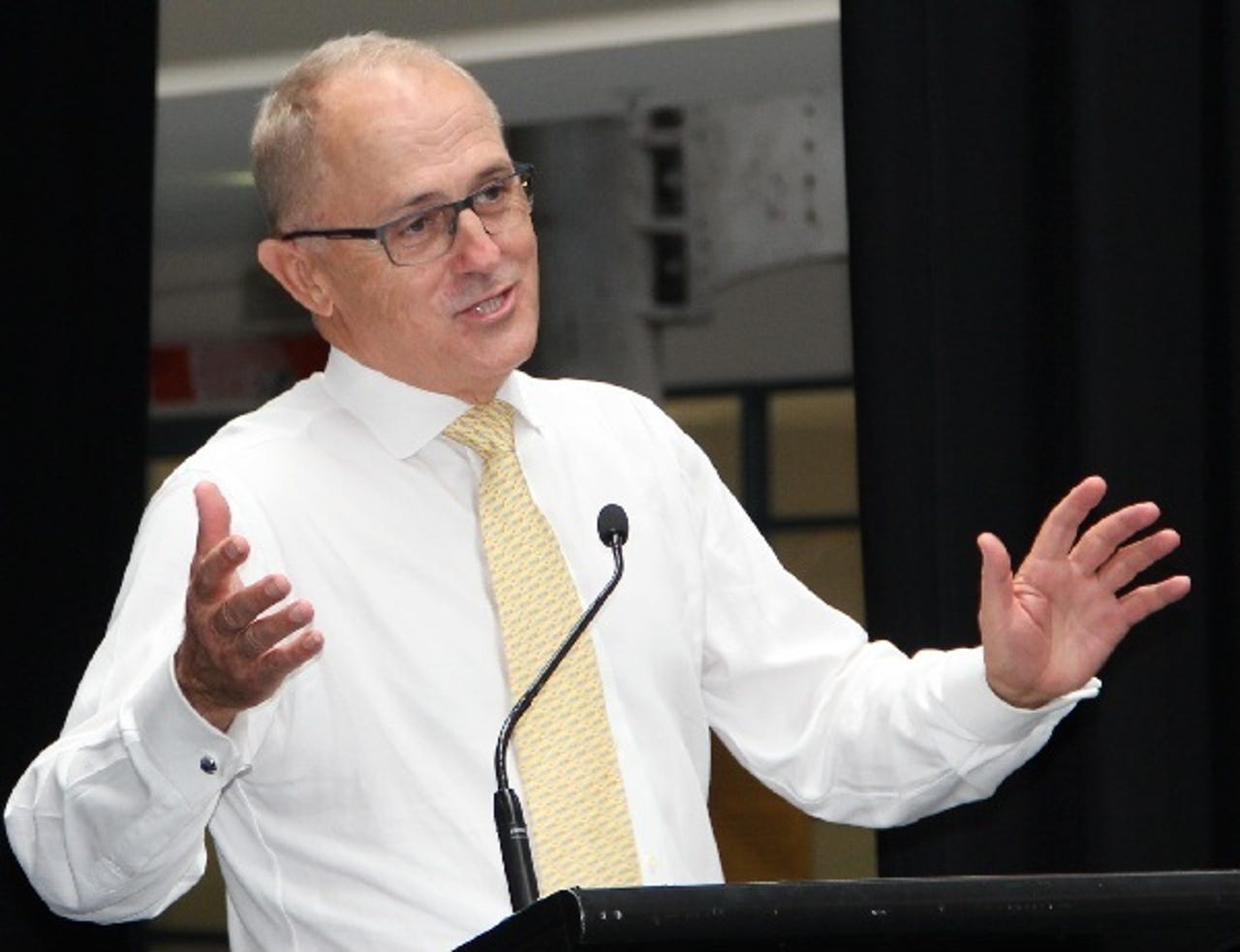Turnbull argues government should be run like NBN

Australian Communications Minister Malcolm Turnbull has said that his approach to explaining to the public the changes to the National Broadband Network (NBN) under the Coalition government could be used as a template for how the government should prosecute its other policies.
The Australian government has wallowed in the polls since the May Budget, and its major ticket items have either yet to pass the Senate, or been walked back after public outcry.
This culminated in a failed leadership spill last month, where 39 elected members of his own party voted for the opportunity to throw Prime Minister Tony Abbott out of the chair during his first term in office.
Read this
In a speech delivered on Wednesday in Brisbane, Turnbull -- a likely candidate for the top job should Abbott ever be turfed out by his own party -- argued that the government needs to make the case for the Budget "by honestly and accurately describing our circumstances, and setting out credible and fair options for bringing outlays and revenue back into balance".
Turnbull said that the Budget was not a failure, but did not go far enough to "achieve the degree of fiscal repair and reform" needed, and he said the public was not persuaded by the changes proposed.
"We -- and I include myself and every member of the government in this criticism -- did not do a good enough job in explaining the scale of the fiscal problem the nation faces, and the urgency of taking corrective action," he said.
"In addition, there was a deeply felt sense in much of the community that our proposed Budget measures were unfair to people on lower incomes when taken as a whole. In my view, the failure to effectively make the case for Budget repair was our biggest misstep, because it was a threshold we never crossed."
He said that the government needs to "explain an issue" often enough so that people understand the problem and agree that something must be done.
In his own portfolio since coming into office, Turnbull has commenced approximately six reviews into the NBN and broadband in general to lay the groundwork for the government's argument that the full fibre-to-the-premises rollout was a mistake, and to make the case for his multi-technology mix model that incorporates fibre-to-the-node, hybrid fibre-coaxial (HFC), and fibre-to-the-basement technologies.
"With the NBN, the first thing we threw out was ideology, lies, and spin. We told the truth about the project -- with an independent Strategic Review completed three months after the September 2013 election, by publishing weekly rollout statistics, through requiring the company to provide detailed quarterly financial and operational reports. In short, we made NBN Co as open and accountable as a publicly listed company," Turnbull said.
The minister also appointed a new chairman, replaced most of the board, and appointed a new CEO.
The first review also highlighted that the Coalition's election promise of having 25Mbps download speeds delivered to all Australians by 2016 was not achievable.
But Turnbull said the approach he has taken to the NBN involves being "pragmatic" about the technology used.
"Rather than engaging in theological debates about fibre versus copper versus other technologies, we would free the company to use whichever access technology enabled it to finish the job as quickly and cheaply as possible," he said.
"Most end users accept this approach, and are happy to forgo Labor's fibre nirvana in favour of high-speed broadband deployed sooner and costing less."
As part of the renegotiated deal with Telstra, NBN Co is not obligated to use the copper network in an area where another technology would be more suitable, but it is unlikely that customers in the HFC footprint would be given the alternative to get fibre to the premises or fibre to the node.
Customers in fibre-to-the-node footprints will soon have the option to pay to have the fibre rolled out right to their premises.
